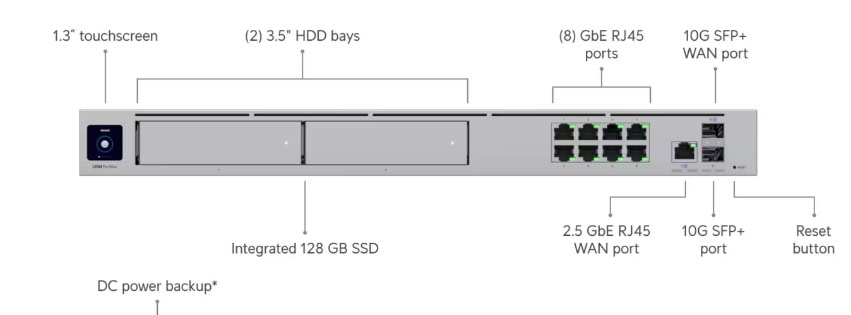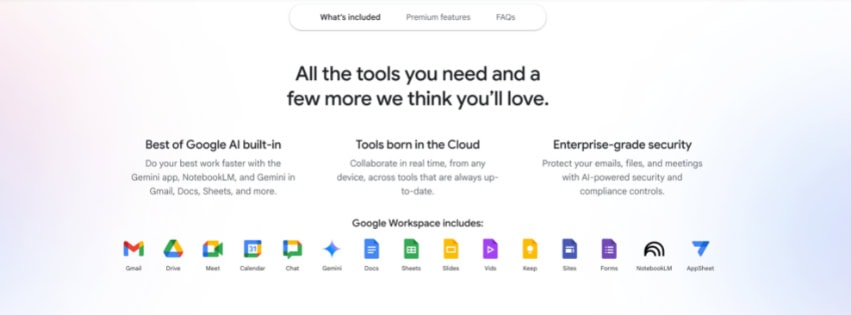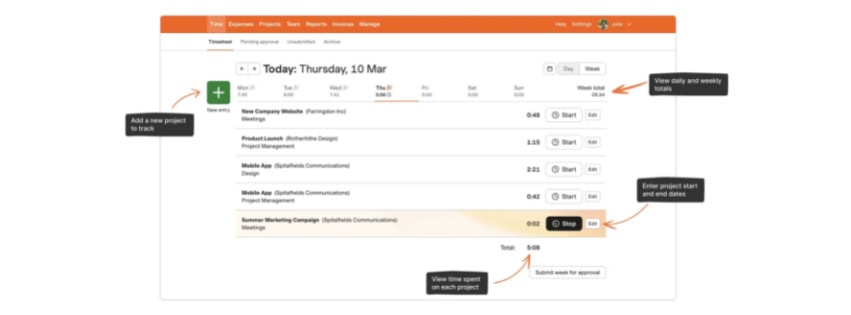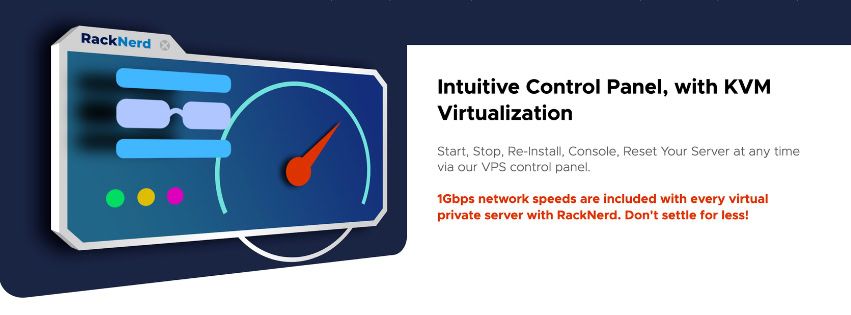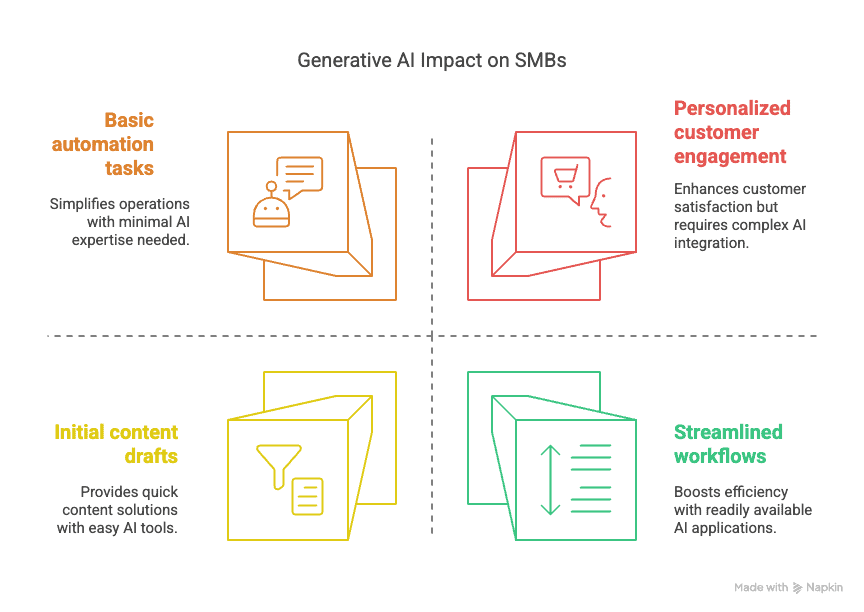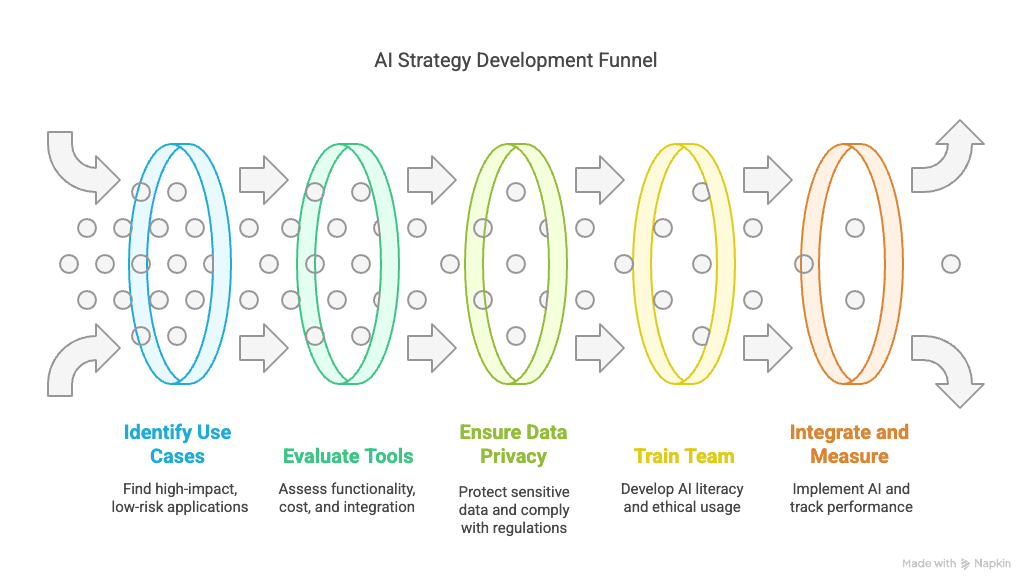Running a business in South Florida means dealing with realities that colleagues in other cities simply don't face. While your counterparts in Atlanta might worry about occasional ice storms, Miami business owners know that a Tuesday afternoon thunderstorm can knock out power for three hours, flood the parking lot, and leave half your team working from their phones until the lights come back on.
These aren't catastrophic events requiring emergency response teams. They're routine operational challenges that successful Miami businesses have learned to handle with the right preparation and equipment. The difference between a minor inconvenience and a lost afternoon of productivity often comes down to having the right hardware in place before you need it.
Over the past decade, I've consulted with dozens of South Florida businesses, and I've seen which approaches work and which leave teams scrambling when the inevitable afternoon storm rolls through. The goal isn't to prepare for worst-case scenarios but to maintain smooth operations despite the weather patterns we all know are coming.
Understanding South Florida's Business Weather Reality
Miami's weather challenges are predictable in their unpredictability. The afternoon thunderstorms that build up during summer months don't announce themselves with week-long weather warnings. One minute you're in a client meeting under blue skies, and twenty minutes later the power flickers twice before going out completely, taking your internet connection with it.
Common Business Disruptions
Power Grid Issues
- FPL outages during afternoon storms (2-6 hours typical)
- Rolling blackouts during peak summer demand
- Brief outages from transformer issues
Infrastructure Impacts
- Flooded parking lots and ground-floor access issues
- Internet service disruptions from fiber cuts or equipment flooding
- Phone system interruptions when connectivity drops
- HVAC failures affecting sensitive equipment
Timing Challenges
The biggest issue isn't the severity of these events—it's their timing. These storms don't conveniently arrive at 6 PM when everyone's heading home. They hit during peak business hours, often right in the middle of important client calls or when you're racing to meet a deadline.
Miami Business Reality Check: The businesses that continue operating smoothly during these events aren't lucky – they've invested in the right equipment and setup their operations to handle routine disruptions without missing a beat.
Power Management: Your First Line of Defense
Most Miami business owners understand they need some form of backup power, but many underestimate what actually requires protection. It's not just about keeping computers running long enough to save work. Modern businesses depend on network equipment, phone systems, and security devices that all need power to maintain business continuity.
UPS Systems by Equipment Type
| Equipment Category | Recommended UPS | Runtime Needed | Purpose |
|---|---|---|---|
| Desktop Workstations | APC Back-UPS Pro | 15-30 minutes | Save work, proper shutdown |
| Network Equipment | CyberPower Rack-Mount | 2-4 hours | Maintain connectivity |
| Server Systems | APC Smart-UPS | Configurable | Extended operation |
Why Network Equipment Needs Special Attention
Network equipment deserves priority protection because it affects your entire office's connectivity. A quality UPS on your network switches, wireless access points, and internet modem means that employees with laptops can continue working on battery power while maintaining access to cloud-based applications and cloud-based business communication tools.
Key Benefits:
- Employees can continue working during outages
- Cloud applications remain accessible
- Communication systems stay operational
- No lost network configurations or settings
Surge Protection Strategy
Whole-office surge protection is equally important but often overlooked. Here's the layered approach that works:
- Primary Protection: Eaton surge protective device at the electrical panel
- Secondary Protection: Tripp Lite isobar units for critical workstations
- Network Protection: Ethernet surge protectors for network equipment
This handles both major surges from power lines and smaller fluctuations that gradually damage electronics.
Maintaining Connectivity When the Internet Goes Down
Internet connectivity failure is often more disruptive to modern businesses than power outages, especially with so many operations moving to cloud-based systems. Having backup internet isn't just for large enterprises anymore—it's become a practical necessity for any business that depends on its small business software stack.
The Dual-Provider Strategy
The most reliable approach involves contracting with two different internet service providers using different infrastructure paths:
Recommended Combination:
- Primary: Comcast Business (cable)
- Secondary: AT&T Fiber
- Backup: AT&T business cellular hotspots
Automatic Failover with UniFi Dream Machine Pro
The UniFi Dream Machine Pro router automatically detects when your primary connection fails and seamlessly switches to backup without interrupting ongoing work sessions. This eliminates the manual intervention that often causes delays when the primary service goes down.
Key Features:
- Automatic connection monitoring
- Seamless failover switching
- Load balancing during normal operations
- Central management interface
Cost Justification
Quick ROI Calculation: Calculate your revenue per hour (annual revenue ÷ working hours). Multiply by typical outage duration. Most businesses find that a single avoided outage pays for several months of backup service costs.
Example: A $500K/year business loses ~$250/hour during outages. A 4-hour outage costs $1,000 in lost productivity—enough to justify backup internet for an entire year.
Communication Systems That Work When Everything Else Doesn't
Traditional phone systems tied to physical lines have largely given way to internet-based communications, but this creates new vulnerabilities during connectivity disruptions. The solution isn't to return to old technology but to implement modern systems designed with redundancy.
UniFi Talk: Integrated Business Communications
UniFi Talk represents the evolution of business phone systems for companies needing reliability during disruptions. Because it integrates with your existing UniFi network infrastructure, it automatically routes calls through your backup internet connection when primary service fails.
Advantages:
- Integrated ecosystem: Works seamlessly with UniFi networking equipment
- Mobile app: Business number remains reachable during office access issues
- Automatic failover: Switches to backup internet without call drops
- Cost-effective: Eliminates separate phone system infrastructure
Team Communication Backup Plan
Primary Tools: Slack, Microsoft Teams (through backup internet)
Mobile Backup: Cellular data connections for critical communications
Client Contact: Multiple contact methods established in advance
Essential Remote Access: UniFi Identity
UniFi Identity provides secure VPN access, allowing employees to connect to office resources from home or alternative locations. This isn't just for emergencies—it's for maintaining productivity when parking lots are flooded or when commuting becomes impractical.
Use Cases:
- Accessing office files during connectivity issues
- Working from home during severe weather
- Connecting to office applications remotely
- Maintaining security while enabling flexibility
Data Protection That Goes Beyond Cloud Storage
While cloud storage has revolutionized data backup and accessibility, relying entirely on cloud systems creates vulnerabilities during internet disruptions. The most resilient approach combines cloud convenience with local accessibility.
Local Backup with Synology NAS
Network-attached storage systems create local file servers that your team can access even when internet service is disrupted. The Synology DS923+ 4-Bay NAS automatically syncs with cloud storage during normal operations but provides immediate access to current file versions when connectivity is limited.
Synology Advantages:
- Hybrid cloud sync: Automatically mirrors to cloud services
- Local access: Files available during internet outages
- Mobile apps: Secure remote access when needed
- Automatic backup: Real-time protection without user intervention
Backup Strategy Framework
| Scenario | Local NAS | Cloud Backup | Mobile Access |
|---|---|---|---|
| Normal Operations | ✓ Real-time sync | ✓ Automatic upload | ✓ Full access |
| Internet Outage | ✓ Full access | ✗ No upload | ✓ Cached files |
| Power Outage | ✗ With UPS only | ✓ From mobile | ✓ Full access |
| Equipment Failure | ✗ Needs replacement | ✓ Full recovery | ✓ Full access |
Mobile File Access Strategy
Secure remote file access through your backup systems ensures employees can retrieve necessary documents, whether working from home during storms or accessing files from client locations when the office is temporarily inaccessible.
Building Mobile Operations Capability
The businesses that maintain productivity during weather disruptions share a common characteristic: they've built genuine mobile operations capability rather than just remote access to office systems.
Essential Mobile Equipment
Business Laptops
- Extended battery life (8+ hours)
- Built-in cellular capability where available
- USB-C charging for universal power compatibility
Power Management
- High-capacity USB-C PD power banks for laptop charging
- Multiple charging cables and adapters
- Car chargers for extended mobile operations
Connectivity Solutions
- AT&T business hotspots with high data allowances
- Multi-carrier devices for redundancy
- Signal boosters for challenging locations
Portable Office Essentials
Document Production
- Battery-powered portable printers for contracts and presentations
- Mobile scanners for document digitization
- Backup supplies (paper, ink, cables)
Communication Equipment
- Quality headsets for extended video calls
- Portable displays for presentations
- Document cameras for remote collaboration
Distributed Equipment Strategy
Rather than duplicating entire office setups, focus on ensuring key employees have essential equipment at alternative locations:
Critical Staff Locations:
- Home office UPS for key employees
- Backup workstations for essential functions
- Mobile equipment kits for rapid deployment
Solutions by Business Type
Different businesses face different vulnerabilities during weather-related disruptions. Effective hardware solutions should address your specific operational requirements and align with your industry-specific software requirements.
Professional Services (Law, Accounting, Consulting)
Priority Areas:
- Client communication continuity
- Document access and security
- Billing system protection
- Meeting capability maintenance
Recommended Setup:
- UniFi Talk phone system with mobile apps
- Cloud-based file systems with local NAS backup
- UPS protection for accounting workstations
- Mobile video conferencing equipment
Creative Agencies (Marketing, Design, Video)
Unique Challenges:
- High-power workstation requirements
- Large file management
- Client presentation needs
- Tight deadline pressures
Specialized Equipment:
- Professional-grade UPS for graphics workstations
- High-speed NAS for video project storage
- Portable presentation displays
- Mobile color-accurate monitors
Medical/Healthcare Offices
Compliance Requirements:
- HIPAA-compliant backup systems
- Patient data protection
- Communication security
- Equipment protection
Essential Systems:
- Encrypted backup solutions
- Battery backup for medical devices
- Secure messaging platforms
- Mobile appointment management
Retail/E-commerce Operations
Critical Functions:
- Payment processing continuity
- Inventory management
- Customer communication
- Security monitoring
Hardware Priorities:
- Battery-powered POS systems
- Offline-capable inventory systems
- Security cameras with backup power
- Mobile customer service tools
Budget Planning and ROI Analysis
Implementing weather-resilient hardware requires thoughtful budget planning and realistic assessment of potential returns. Your hardware resilience investments should complement your software budget planning to create a comprehensive technology strategy.
Investment Tiers
| Budget Range | Included Equipment | Best For |
|---|---|---|
| $2,000-4,000 | Basic UPS, surge protection, backup internet | Small offices, routine protection |
| $5,000-10,000 | Redundant systems, NAS storage, and mobile equipment | Professional services, client-dependent businesses |
| $10,000+ | Comprehensive redundancy, automatic failover | Larger businesses, compliance requirements |
Calculating Downtime Costs
Basic Formula:
- Annual revenue ÷ working hours = revenue per hour
- Revenue per hour × typical outage duration = outage cost
- Compare outage cost to hardware investment
Hidden Costs to Consider:
- Client satisfaction and retention impact
- Employee productivity and morale
- Competitive advantage of reliability
- Insurance premium reductions
- Avoided contract penalties
Return on Investment Timeline
Most businesses see returns within the first year through a combination of:
- Avoided downtime: Direct revenue protection
- Client retention: Reputation for reliability
- Employee productivity: Reduced stress and delays
- Insurance benefits: Potential premium reductions
Maintenance and Testing Schedule
Weather-resilient hardware requires regular maintenance to ensure reliability when systems are needed. These recommendations align with the NIST business continuity framework for small and medium businesses.
Monthly Tasks
- UPS Testing: Brief battery power verification
- Connection Monitoring: Check backup internet functionality
- Mobile Equipment: Ensure devices are charged and updated
Quarterly Reviews
- Failover Testing: Complete backup system verification
- Software Updates: Security patches and feature updates
- Documentation: Update emergency contact lists and procedures
Annual Planning
- Equipment Refresh: Battery replacement and hardware updates
- Service Contracts: Review vendor relationships and support agreements
- Budget Planning: Assess new technology and expansion needs
Seasonal Preparation
Summer Storm Season (May-October):
- Extra attention to UPS battery health
- Increased backup testing frequency
- Mobile equipment readiness verification
Year-Round Best Practices:
- Document all equipment for insurance purposes
- Maintain vendor relationships for priority service
- Keep spare batteries and cables available
Working with Local Vendors
South Florida's business community understands weather-related challenges, and many local vendors specialize in reliable service during disruptions.
Advantages of Local Partnerships
Faster Response Times
- Same-day service during weather events
- Local inventory for immediate replacement
- Understanding of regional conditions
Priority Support
- Existing customers receive faster service
- Established relationships mean better problem resolution
- Service agreements include weather event priority
Building Business Networks
Community Resources:
- Business associations and chambers of commerce
- Technology user groups and networking events
- Vendor referral networks
- Shared experiences and best practices
Group Purchasing Opportunities:
- Chamber of commerce vendor relationships
- Bulk purchasing discounts
- Shared service contracts
- Group training and support
Getting Started: Your Implementation Plan
Week 1-2: Assessment and Planning
- Audit current equipment and identify vulnerabilities
- Calculate downtime costs for your specific business
- Research local vendors and get quotes for priority equipment
- Apply for backup internet service (installation can take 2-4 weeks)
Week 3-4: Core Infrastructure
- Install UPS systems for critical equipment
- Set up surge protection throughout the office
- Configure UniFi Dream Machine Pro for automatic failover
- Test backup systems to ensure proper operation
Month 2: Enhanced Capabilities
- Deploy NAS backup system with cloud synchronization
- Set up UniFi Talk phone system with mobile access
- Configure UniFi Identity for secure remote access
- Train staff on backup procedures and mobile operations
Month 3: Optimization and Testing
- Conduct comprehensive failover testing
- Optimize mobile equipment and procedures
- Document all systems for ongoing maintenance
- Schedule regular testing and maintenance procedures
Conclusion: Practical Resilience for Real Business Needs
Weather-resilient business hardware isn't about preparing for disasters—it's about maintaining professional operations despite every Miami business's routine weather challenges. The goal is to create systems that work transparently during normal operations and provide reliable backup capability when conditions require it.
The businesses that handle weather disruptions most effectively share common characteristics: they've invested in appropriate backup systems, tested their equipment regularly, and built relationships with reliable local vendors. Most importantly, they've approached weather preparedness as an operational efficiency issue rather than an emergency response requirement.
Key Takeaways:
- Start with power protection and backup internet connectivity
- Choose integrated solutions that work together seamlessly
- Test systems regularly to ensure reliability when needed
- Build relationships with local vendors for priority support
- Plan for mobile operations, not just backup systems
The investment in weather-resilient hardware typically pays for itself through avoided downtime, maintained client relationships, and improved employee productivity during challenging conditions. When the next afternoon thunderstorm rolls through and your competitors are dealing with outages and connectivity issues, you'll maintain normal operations and serve clients who remember which businesses they can count on regardless of the weather.
The technology solutions available today make it practical for businesses of all sizes to maintain operations during routine weather events. The key is choosing appropriate solutions for your specific needs and implementing them before you need them.
Disclosure: This article contains affiliate links to products we recommend. We may earn a commission from purchases made through these links at no additional cost to you. All recommendations are based on our professional experience and genuine assessment of product quality and suitability for South Florida business environments.


